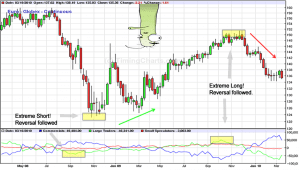Foreign Exchange Market
Thu, 25 Jan 2024


Currency market is a dynamic and complex market where currencies are bought and sold. One of the key concepts that traders need to grasp is the idea of "pips." Pips, short for "percentage in point" or "price interest point," play a crucial role in determining the profitability of trades and understanding market movements.
In this blog post, we will explore the significance of pips in currency trading. However, if you are unfamiliar with what a pip is and how to calculate its value in dollars, we recommend visiting our blog post here before proceeding further.
Traders use pips to figure out how much money they could make or lose in a trade. The difference in pips between the entry and exit points determines the gain or loss. Doing the pip value calculation is important because it helps them handle the risk of the trade better. The calculation of pip value has proven to be useful in following ways in currency trading.
Pips play a crucial role in establishing stop-loss and take-profit orders, providing traders with a standardized metric to manage their risk and potential rewards effectively.
Example:
Consider a scenario where a trader is initiating a long position on the EUR/USD currency pair at 1.1039, anticipating a price increase. To establish clear parameters for mitigating potential losses and maximizing gains, the trader employs the use of pips.
For the Stop-Loss Order: The trader places a stop-loss order 50 pips below the entry point, at 1.0989, to restrict potential losses.
For the Take-Profit Order: A take-profit order is set 100 pips above the entry point, at 1.1139, to secure potential gains.
By expressing the distance for both the stop-loss and take-profit orders in pips, the trader adopts a consistent risk management strategy. This approach ensures a standardized framework, limiting the maximum losses to 50 pips in the event of an unfavorable market movement, while targeting a gain of 100 pips in the case of a favorable market shift.
Traders and analysts use pip movements to assess the volatility of a currency pair. Understanding the average daily or weekly pip movement helps in making informed decisions about trade entries and exits.
Example:
Suppose trader analyzie the EUR/USD pair, and observe that, on average, the pair tends to move around 50 pips per day.
A trader planning to enter a trade considers the average daily pip movement to set a strategic stop-loss order, ensuring it's within the typical daily volatility range. For example, placing a stop-loss 30 pips away from the entry point aligns with this risk management approach.
On the other hand, if trader set a stop-loss order at 100 pips away, it might be exposing trade to a higher risk, as it exceeds the average daily movement.
In this example, the average daily pip movement of 50 pips provides valuable information that allows trader to tailor his trading strategy It helps traders avoid setting levels that are too tight or too wide relative to the currency pair's typical volatility.
The difference between the buying price (bid) and selling price (ask) of a currency pair is called the spread. It's like a small fee you pay when making a trade. The spread is often expressed in pips.
Example:
Let's take an example with EUR/USD:
Bid price (buying): 1.1034
Ask price (selling): 1.1039
To find the spread: Subtract the bid from the ask.
Spread = Ask price - Bid price Spread = 1.1039 - 1.1034 Spread = 0.0005, or 5 pips
So, in this case, the spread is 5 pips. This 5-pip difference is the cost trader face if he decide to buy or sell the currency pair right away. If trader buy, he pay the ask price (1.1039), and if trader sell, he get the bid price (1.1034). The gap between these prices is the spread, indicating the cost of making the trade.
Pips enable easy comparison of price movements between different currency pairs. Traders can assess the relative strength or weakness of currencies by comparing pip movements.
Example:
Suppose currency trader is monitoring two currency pairs: EUR/USD and GBP/USD. On a particular day, the EUR/USD pair moves up by 50 pips, while the GBP/USD pair moves up by 30 pips.
In this scenario, trader can assess the relative strength or weakness of the currencies involved by comparing the pip movements:
The larger movement in the EUR/USD pair (+50 pips) indicates a relatively stronger upward movement compared to the GBP/USD pair (+30 pips). Traders may interpret this as the euro being stronger against the US dollar compared to the British pound on that particular day.
Traders often base their strategies on specific pip movements, such as breakouts or retracements. Pips play a crucial role in the formulation and execution of various trading strategies.
Breakout trading involves identifying key levels of support or resistance and entering a trade when the price breaks out of these levels. Traders often use a certain number of pips above or below these levels to confirm a breakout.
Example:
Suppose a trader identifies a resistance level at 1.10334 in EUR/USD currency pair. Trader observed that the price has consistently failed to break above this level in the past. The trader may decide to initiate a long trade if the EUR/USD price surpasses the 1.10334 resistance level by a certain number of pips, let's say 10 pips. This pip movement acts as a confirmation signal for the breakout.
The movement of currency values in pairs affects whether a trader gains or loses money.
Example:
If someone buys the EUR/USD pair and the euro's value goes up compared to the U.S. dollar, they make a profit. If they bought the euro at 1.1132 and sold it at 1.1182, they gain 50 pips (1.1182- 1.1132 = 0.0050).
Now, consider a trader buying Japanese Yen by selling the USD/JPY pair at 142.01. If they close the position at 141.98, they lose 3 pips, but if they close it at 142.06, they gain 5 pips. Though the difference seems small, in the multi-trillion dollar foreign exchange market, these gains and losses can accumulate.
For example, on a $10 million position closed at 142.06, the trader would make ¥500,000, which is $3,520.87 in U.S. dollars (¥500,000/142.01).
Pips are like the building blocks of currency trading, helping you measure how prices move in the market. They are super important for figuring out potential profits and losses, and they play a key role in managing risk. Knowing how many pips a currency trade costs is a crucial first step in your trading journey. It's not just about understanding fees – it's about figuring out the total value of your trade.
Understanding the value of each pip also helps you see if the risk you're taking in a trade fits with your comfort level and aligned with your risk appetite and the size of your trading account. To become a successful currency trader, it's really important to get the hang of this concept.
If you're looking for a great place to learn all about pips and master the art of currency trading, the Tradeshala Academy of Training can be a game-changer. They're experts in nurturing trading skills, and their courses are designed to help you navigate the currency market with confidence. So, if you're serious about trading and investment in currency market, investing some time in Tradehshala could be the smartest move you make! Click here for more details.
Click here to explore Tradeshala Internship opportunities in Bangalore 2024
Click here to join Tradeshala community for the latest market updates.
Written By-
Mini Agarwal
Specialist Tutor & Research Analyst
Thu, 25 Jan 2024

Thu, 25 Jan 2024

Leave a comment